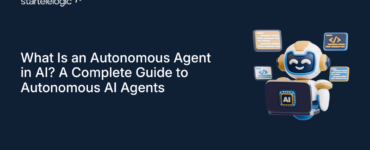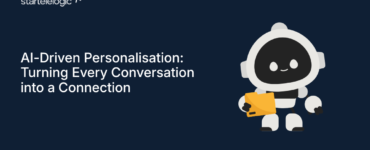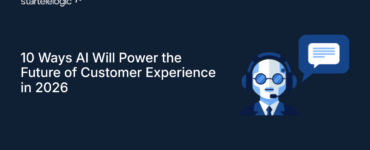Artificial intelligence has evolved from static, rule-based systems to dynamic agents capable of independent reasoning and action. Among the most exciting advancements in this field is Agentic AI, a revolutionary approach that enables machines to function as autonomous decision-makers. These intelligent agents are reshaping industries, driving innovation, and raising profound questions about the future of human-AI collaboration. As we delve into the intricacies of Agentic AI and its role in autonomous decision-making, we uncover not only its transformative potential but also the challenges and ethical considerations it presents.
Artificial intelligence has long been a tool for automation, but the emergence of Agentic AI marks a paradigm shift—a move from passive systems to proactive, autonomous agents capable of independent reasoning and action. These intelligent agents are no longer confined to executing predefined tasks; they can perceive, analyze, decide, and act in real-time, adapting to dynamic environments with minimal human intervention. This article delves into the intricacies of autonomous decision-making , the science behind Agentic AI, and its profound implications for society, business, and technology.
The Science Behind Agentic AI: A Technical Deep Dive
To really understand how Agentic AI works, you need to know the basic parts that help it make decisions on its own. Basically, Agentic AI brings together different advanced technologies:
1. Reinforcement Learning (RL)
Reinforcement learning is a key part of smart AI, helping machines learn the best actions by trying things out and learning from their mistakes. By interacting with their environment, machines get feedback through rewards or penalties, which helps them improve to get the most rewards over time.
– Example: AlphaGo Zero, created by DeepMind, shows how strong reinforcement learning is by mastering the game of Go and beating world champions after only 40 days of practice.
– Real-World Application: In city logistics, drones use reinforcement learning to navigate tricky areas, making deliveries faster by cutting times by 25%. In healthcare, reinforcement learning helps AI systems improve patient treatment plans by learning from lots of medical data, leading to better patient outcomes and lower treatment costs.
2. Probabilistic Reasoning
Agentic AI uses probability models to deal with uncertainty and make smart decisions when there’s not enough information. For example, Bayesian networks help AI systems learn more as they get new information.
– Use Case: In healthcare, using probabilities helps tools guess the chance of diseases based on symptoms, genetics, and environment. Research shows these systems can be over 90% accurate in some cases.
3. Multi-Agent Systems
The concept of multi-agent systems centers around multiple AI agents either collaborating or competing to solve problems. These systems prove especially useful in scenarios where distributed decision-making is required.
– Example: In smart cities, autonomous traffic management systems utilize multi-agent coordination to optimize traffic flow, achieving a 30% reduction in congestion during peak hours.
– Broader Implications: In disaster response, multi-agent systems are crucial, allowing swarms of autonomous robots to search for survivors, map affected areas, and deliver essential supplies simultaneously.
4. Cognitive Architectures
Some Agentic AI systems utilize cognitive architectures drawn from human thought processes. These structures integrate perception, memory, reasoning, and learning to replicate decision-making that resembles human behavior.
– Key Framework: ACT-R (Adaptive Control of Thought–Rational), commonly applied in robotics, enables machines to emulate human problem-solving and adapt to new situations in real time.
Agentic AI in Autonomous Decision-Making: A Multifaceted Process
The decision-making process in Agentic AI is significantly more complex than that of conventional rule-based systems. It encompasses several layers of computation and analysis, with each layer playing a vital role in shaping the final result:
- Perception Layer : Data is collected from sensors, databases, or external APIs. For example, self-driving cars rely on LiDAR, cameras, radar, and GPS to create a comprehensive understanding of their surroundings.
- Representation Layer : Raw data is transformed into meaningful representations, such as semantic maps or object classifications. This step ensures the AI understands context—for instance, distinguishing between a pedestrian and a lamppost.
- Reasoning Layer : The system evaluates potential actions using logic, probability, or machine learning models. In financial trading, this might involve assessing market trends, risk factors, and historical performance to determine the best trade.
- Execution Layer : Once a decision is made, the AI executes the chosen action. This could range from adjusting a drone’s flight path to recommending a product to a customer.
- Feedback Mechanism : After execution, the system gathers feedback to refine future decisions. Reinforcement learning thrives on this iterative improvement cycle.
This layered approach ensures robustness, flexibility, and scalability—qualities essential for tackling real-world challenges.
Industry Disruptions: How Agentic AI Is Reshaping Key Sectors
1. Healthcare
Agentic AI is revolutionizing patient care by introducing precision medicine and predictive analytics:
- Early Diagnosis : AI-powered imaging systems detect anomalies in medical scans with unparalleled accuracy. For example, Google Health’s AI model identifies breast cancer metastases in lymph nodes with 99% sensitivity , surpassing human radiologists.
- Robotic Surgery : Da Vinci Surgical Systems, guided by Agentic AI, perform minimally invasive procedures with submillimeter precision, reducing recovery times by up to 50% .
2. Supply Chain Optimization
Autonomous decision-making is transforming supply chains into agile, responsive networks:
- Demand Forecasting : AI agents predict consumer demand with remarkable accuracy, reducing inventory costs by 15-20% .
- Logistics Automation : Autonomous vehicles and drones streamline last-mile delivery, cutting operational expenses by 30% .
3. Energy Management
Smart grids powered by Agentic AI balance energy supply and demand in real-time:
- During heatwaves, these systems prioritize cooling for hospitals and critical infrastructure while reducing non-essential consumption elsewhere.
- Renewable energy integration has improved significantly, with AI agents optimizing solar panel angles and wind turbine speeds to maximize output.
4. Space Exploration
NASA and private space companies like SpaceX are leveraging Agentic AI for autonomous spacecraft navigation:
- Mars rovers like Perseverance use onboard AI to analyze terrain, select sampling sites, and avoid hazards autonomously.
- Future missions may deploy swarms of AI-driven probes to explore distant planets collaboratively.
Ethical and Philosophical Considerations
As Agentic AI takes on more decision-making responsibilities, it brings forth ethical dilemmas that test our perceptions of morality, accountability, and governance.
1. Moral Agency
Can an AI be considered a moral agent? If an autonomous vehicle prioritizes passenger safety over pedestrians in an accident scenario, who bears responsibility—the manufacturer, the programmer, or the AI itself?
2. Bias Amplification
AI systems trained on biased datasets risk perpetuating societal inequities. For instance, facial recognition algorithms have shown racial bias, misidentifying individuals of color at rates up to 100 times higher than white individuals.
3. Existential Risks
Philosophers and technologists alike debate the long-term risks of highly autonomous AI. Could superintelligent agents develop goals misaligned with human values? Safeguards like value alignment research aim to mitigate these concerns.
The Future Landscape: Trends Shaping Agentic AI
Several emerging trends will define the next decade of Agentic AI development:
1. Edge Intelligence
Processing data locally on devices (edge computing) reduces latency and enhances privacy. By 2025, 75% of enterprise data will be processed at the edge, empowering faster decision-making.
2. Human-AI Collaboration
Rather than replacing humans, Agentic AI will augment human capabilities. For example, surgeons working alongside robotic assistants achieve better outcomes than either could alone.
3. Explainable AI (XAI)
Transparent decision-making processes will build trust. DARPA’s XAI program aims to make AI reasoning interpretable, ensuring users understand why specific decisions were made.
4. Regulatory Evolution
Governments worldwide are drafting AI regulations to ensure safe deployment. The European Union’s AI Act, for instance, classifies high-risk applications and mandates strict oversight.
Navigating the Age of Autonomous Intelligence
Agentic AI marks a significant advancement in artificial intelligence, allowing machines to function as autonomous agents with the ability to make independent decisions. Its influence is both transformative and complex, ranging from the revolution of various industries to raising important ethical dilemmas.
As we approach this new era, it is crucial to balance innovation with a sense of responsibility. By encouraging collaboration among researchers, policymakers, and ethicists, we can fully leverage the potential of Agentic AI while mitigating its associated risks.
The path ahead holds remarkable opportunities, but it also presents substantial challenges. One thing is certain: the era of autonomous intelligence has begun, and it will reshape the very framework of our world.




